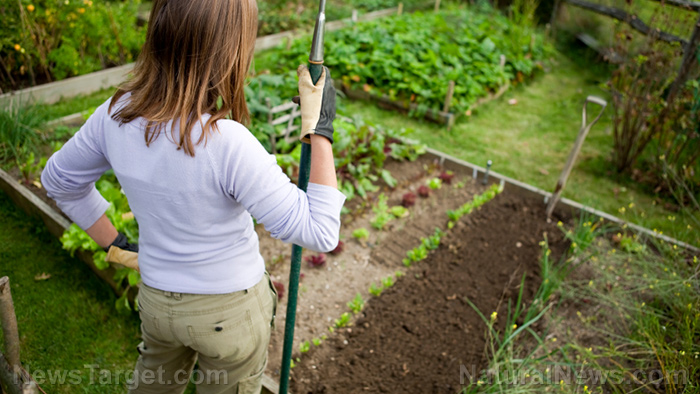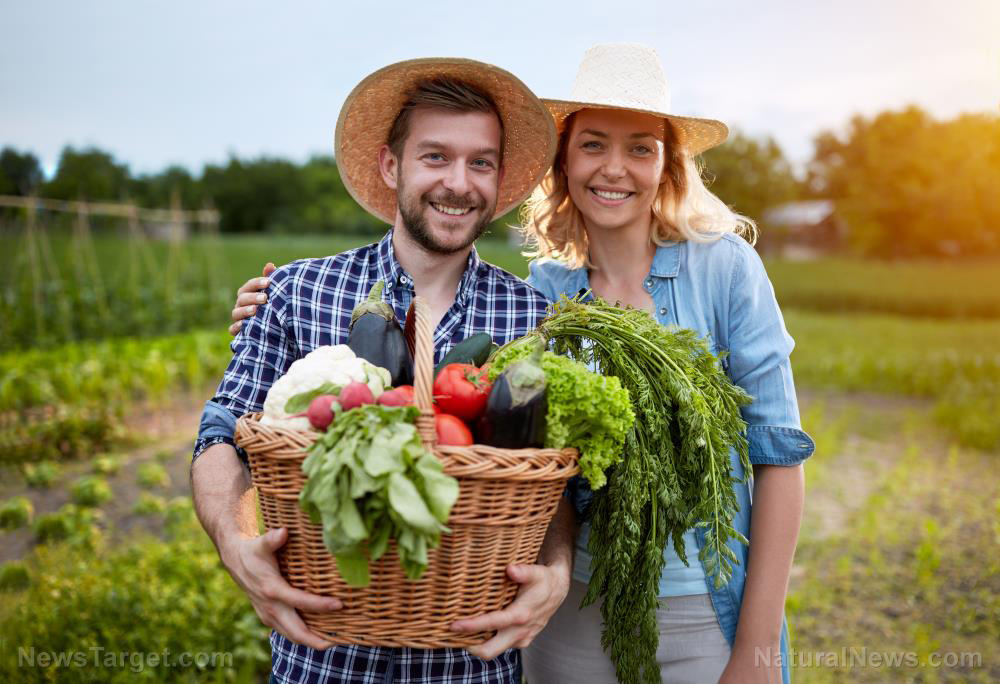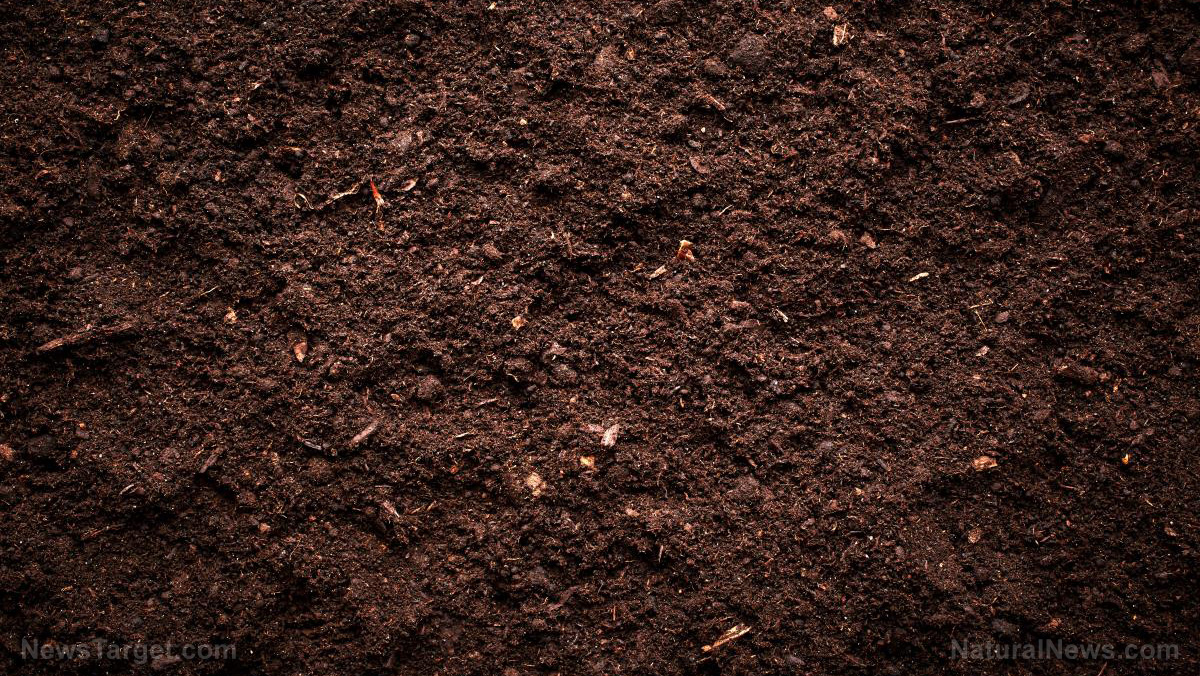
This method offers many benefits, such as maintaining good garden soil health, preventing common plant diseases and naturally controlling insect pests. (h/t to TheEpochTimes.com)
What is crop rotation?
Crop rotation is one of the most effective strategies for organic pest control. It also helps maintain healthy garden soil.
If you're interested in crop rotation, you need to learn the proper planned order of vegetables or fruits in garden beds. Additionally, you need to make sure you don't plant the same crop and the same family of crops in the same space for a two or three-year period.
Thus, you need to know what family your garden crops belong to.
The rules of crop rotation apply to plants in the same family, like tomatoes and potatoes. This is crucial because plant families are often susceptible to the same pests and diseases, unless you're growing a particular variety that has been bred for resistance.
Benefits of crop rotation
Here are the three benefits of crop rotation:
It helps prevent the depletion of soil nutrients
Vegetable garden yields will decline if you grow the same plants in the same garden beds every year because of soil nutrient depletion.
Plant roots that plunge to different depths each year to keep the soil food web active. Crops like legumes help stimulate beneficial soil microorganisms while big, leafy greens can suppress garden weeds.
All plants need unique amounts of nitrogen, phosphorus, potassium (NPK) and trace minerals. If you grow the same plants that make repeated demands of the same patch of soil, the elements they require become depleted and may take several years to replenish.
You need to do a soil test to monitor levels of NPK and compost in between crops to boost soil health. If you have a small garden with only one raised bed, you can still practice crop rotation.
If you eat a lot of tomatoes during summer, grow tomatoes in containers on your porch for one or two seasons while you grow beans or lettuce in the raised bed. (Related: Companion plants and crop rotation hold the answers to non-chemical treatments for superweeds and soil nutrient loss.)
You can plant peas and beans before or after anything. These legumes harvest nitrogen from the air and return it to the soil, unlike other plant families.
After harvest, put bean and pea vines into the soil or add the vines to your compost pile. This adds organic matter and nitrogen to garden soil.
It helps prevent plant diseases
Growing the same crop in the same spot year after year is called monoculture.
With monoculture, pests and diseases concentrate their efforts on your plants. This is why Big Ag farmers use heavy applications of fertilizers and pesticides.
If tomatoes in your garden are infected by Verticillium wilt this year and you plant tomatoes in the same bed next year, the previous season's soil-borne Verticillium will once again infect the new tomatoes.
Worse, the disease will produce even more fungi in the process. However, if you plant something resistant to Verticillium like broccoli or mustard, the fungi will diminish.
The same is true for other diseases like tomato blight. If your tomatoes were infected with blight last year, fungal spores from the blight most likely overwintered in the soil.
Planting tomatoes the following year in the garden bed furthest from the blight-infested bed will help reduce the chances that your tomatoes will catch the disease again.
It helps control garden pests
A lot of soil-dwelling insects are fairly immobile, like wireworms which damage plants like carrots and sweet potatoes.
If you plant carrots and sweet potatoes in the same raised bed every year, wireworms will build up in the soil. Within several seasons you will be dealing with a terrible infestation.
But if you plant non-root vegetables like lettuce or spinach after growing carrots or sweet potatoes in your garden, the wireworms will lose their food source and will be unable to multiply.
Crop rotation plan for a vegetable garden
If you have several garden beds, assign each plant family below a letter: One group to A, one to B, one to C, and so on. Grow plants from the same family together.
Not sure which plants belong to the same family? Here's a list of major vegetable family groupings.
- Alliums – Garlic, leeks, onions and shallots are alliums.
- Brassicas – Broccoli, Brussels sprouts, cabbage, Chinese cabbage, cauliflower, collards, kale, mustard greens, radishes and turnip greens are Brassicas. These plants share pest issues and often need to be netted to block cabbage moths. They required nitrogen-rich soil and should be planted after the legume (bean) family.
- Cucurbits – Cucumbers, gourds, melons (watermelon, cantaloupe), pumpkins and winter squash, summer squash and zucchini are cucurbits. These plants are heavy feeders that thrive in rich soil.
- Legumes – Green beans, green peas, peanuts, southern peas and soybeans are legumes. All legumes are soil "fixers" that help add nitrogen back to the soil.
- Nightshades – Eggplants, peppers, potatoes and tomatoes are nightshades. These crops require rich soil. They are affected by the same diseases. Don't plant tomatoes after potatoes.
- Umbellifers – Carrots, dill, fennel, parsley and parsnips are umbellifers.
A sample crop rotation plan looks like this:
- 1st year – Bed 1 – Family A, Bed 2 – Family B, Bed 3 – Family C
- 2nd year – Bed 1 – Family B, Bed 2 – Family C, Bed 3 – Family A
Try crop rotation to improve soil health and prevent plant diseases in your home garden.
Watch the video below to know more about vegetables you can grow at home.
More related stories:
A crash course in intensive gardening.
Home gardening basics: How to grow these 5 vegetables that maximize your crop yield.
Organic fertilizer can be used to increase crop yield in plants grown in rotation.
Sources include:
Please contact us for more information.























